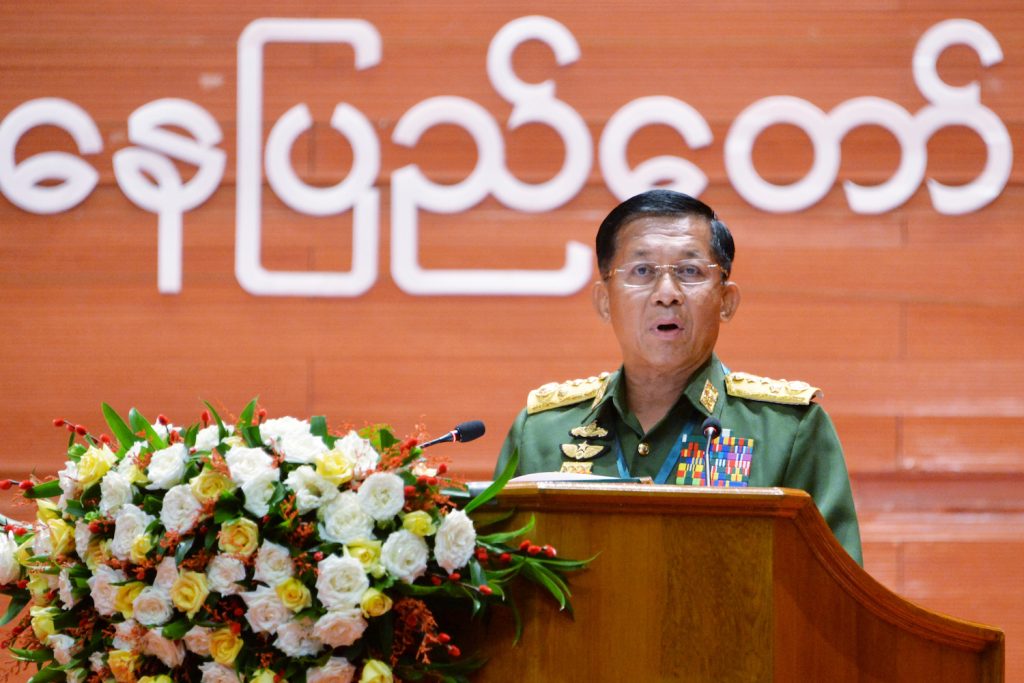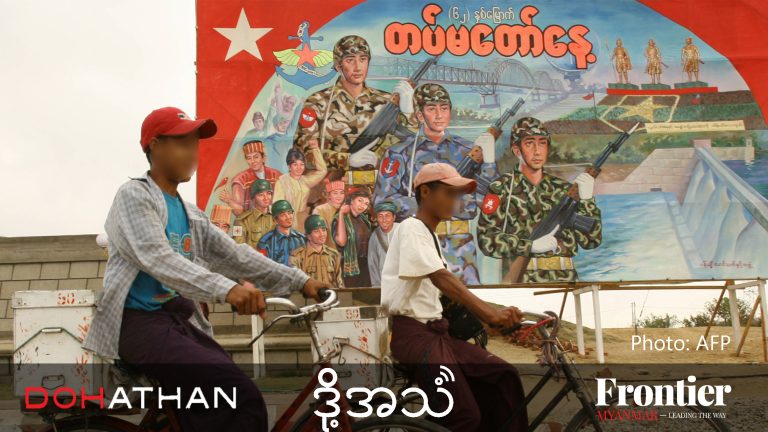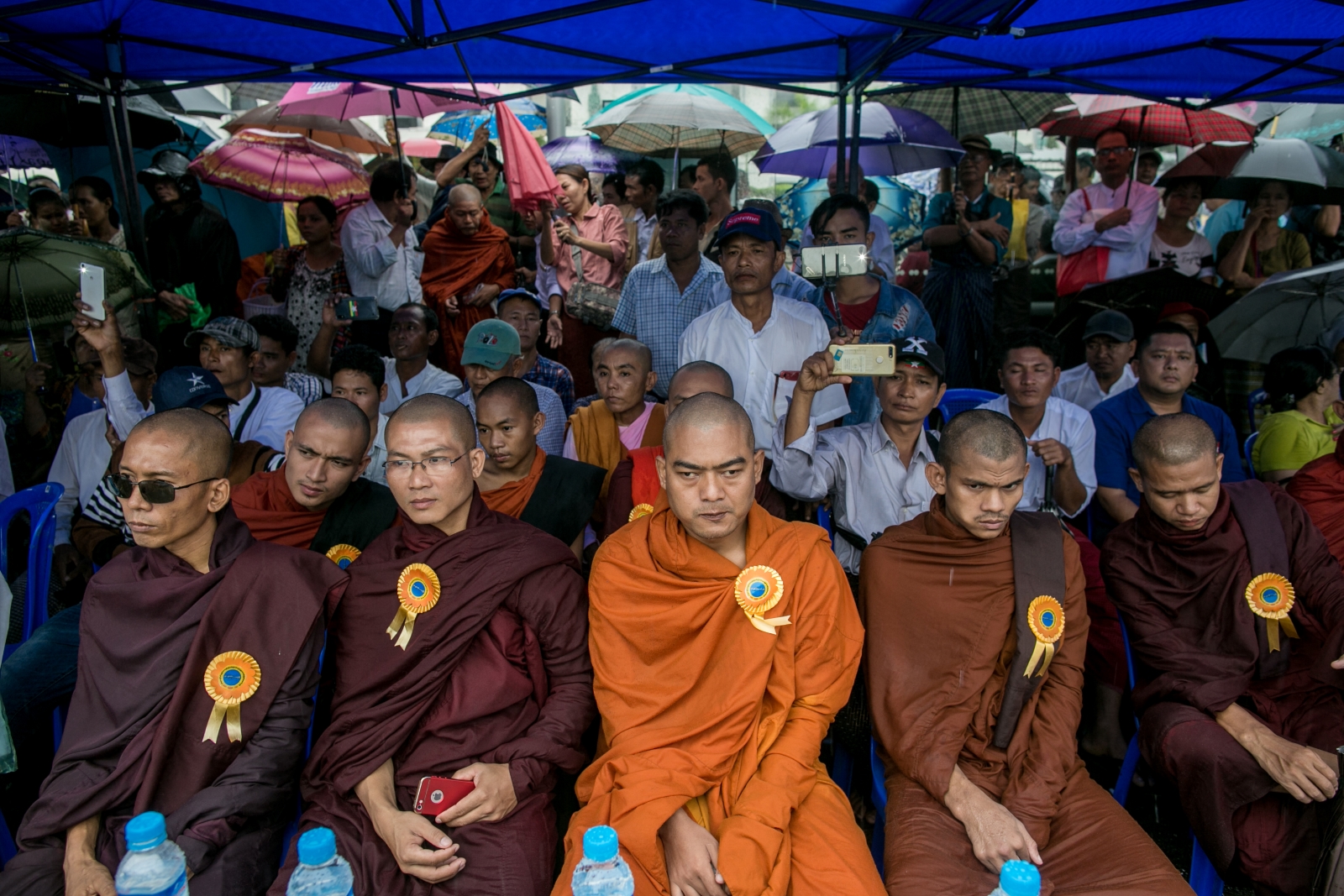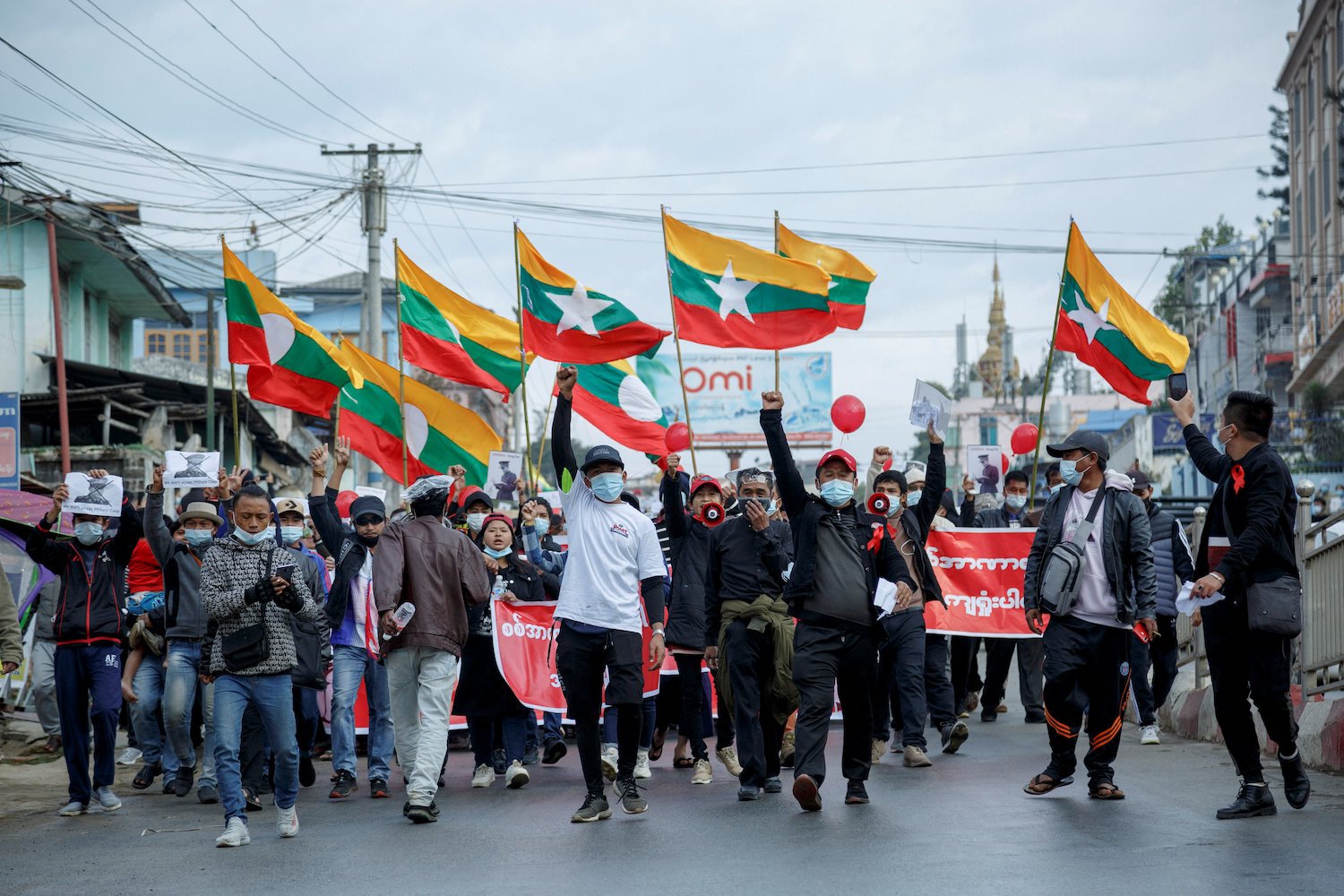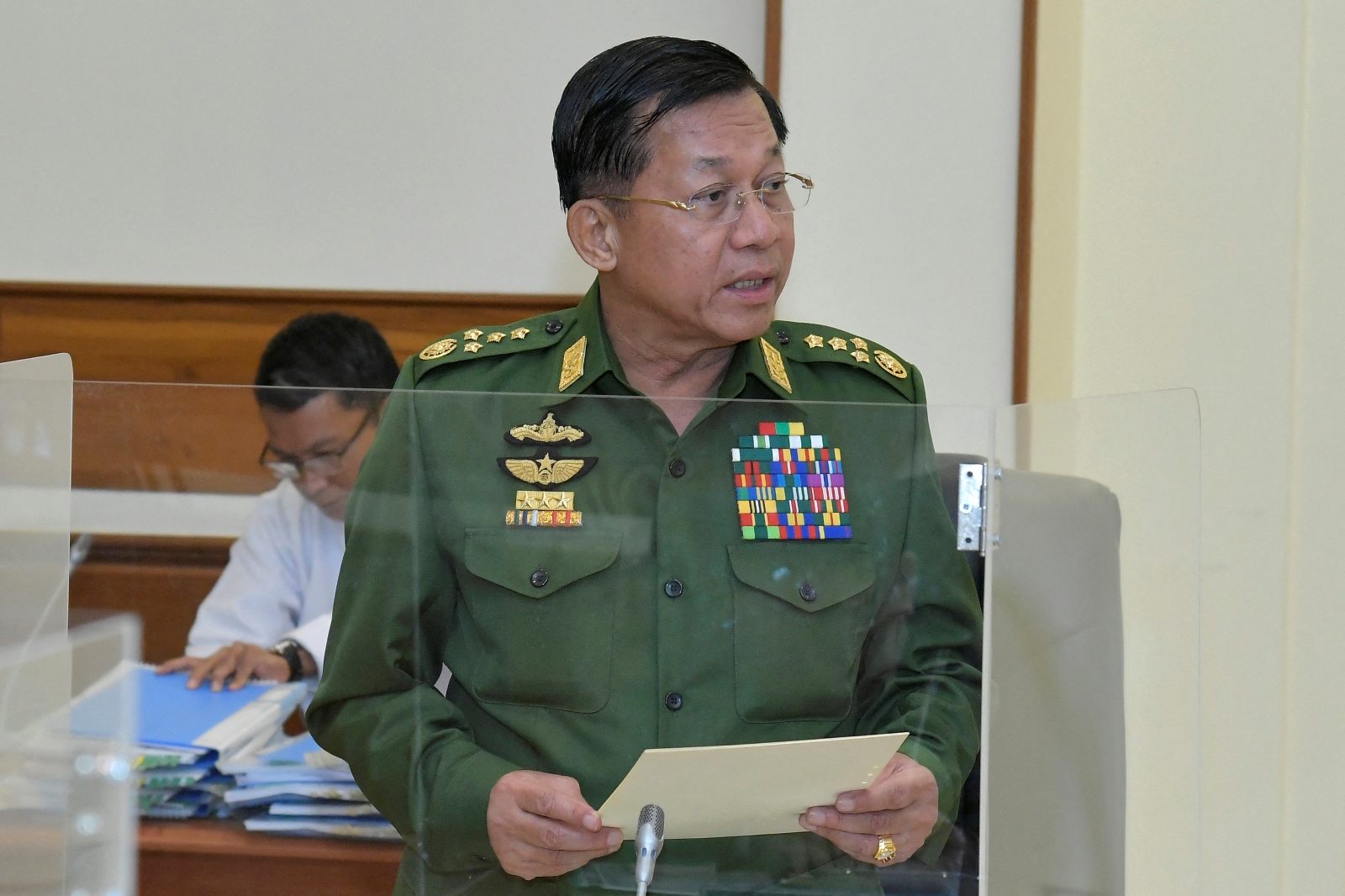The Tatmadaw commander-in-chief has long coveted the position of president but it’s unlikely that the Union Solidarity and Development Party will win enough seats in November to enable him to achieve his ambition.
By SITHU AUNG MYINT | FRONTIER
Myanmar politicians and international observers are increasingly interested in the future of Tatmadaw Commander-in-Chief Senior General Min Aung Hlaing, who was appointed to his position in 2011 but did not retire in 2016 when he turned 60.
There is speculation in the government and the Tatmadaw that when Min Aung Hlaing turns 65 next year he will have to relinquish his position.
Asked about his future in a recent interview and at recent meetings with foreign diplomats, he has given indirect and devious answers.
Will he retire and what will he do if he does?
The ruling military junta under Senior General Than Shwe held an election in 2010 under the 2008 Constitution it drafted, and General Thein Sein was elected president in February 2011 by the national parliament, a month before his Union Solidarity and Development Party government took office.
Than Shwe permitted General Shwe Mann, the third most powerful man in the Tatmadaw after himself and Vice-Senior General Maung Aye, to retire from the Defence Services and compete in the election so he could be appointed speaker of the Pyithu Hluttaw.
There was nothing too surprising about all of this. But what fewer people saw coming was the retirement of both Than Shwe and Maung Aye, and the appointment of Min Aung Hlaing as commander-in-chief.
The 2008 Constitution was carefully drafted by the military to perpetuate its rule. It is fair to say that the Tatmadaw commander-in-chief is in a strong position to become president.
After becoming commander-in-chief, Min Aung Hlaing focused on defence matters and did not interfere in politics, though he had stood firmly on the side of Thein Sein in his battle with Shwe Mann for control of the USDP.
When the National League for Democracy government took office in 2016, Min Aung Hlaing had the option of retiring from the Tatmadaw and taking one of the two vice president positions. He opted to remain as commander-in-chief because as a vice-president he would be required to answer to the president and accept whatever roles he was assigned.
Min Aung Hlaing has become more assertive about the Tatmadaw since the time of the USDP government. Under his leadership, the Tatmadaw presents itself as a separate organization – not one that is under the civilian-led government. Min Aung Hlaing has been quicker to assert his authority, a sign that he is growing more confident. This has fuelled observations about parallel governments in Myanmar.
As the term of the NLD has progressed, friction between it and the Tatmadaw has increased. In a recent development, Min Aung Hlaing sharply criticised the government in public over the peace process. In his address at the opening ceremony of the latest 21st Panglong peace conference in Nay Pyi Taw on August 19, he complained that some said the government was a neutral player in the conflict, which was instead only between the Tatmadaw and ethnic armed groups. These people should “not try to sell dog meat by showing the head of a goat”, he said, invoking a Burmese saying. This was a warning to the NLD government not to present itself as a mediator in the conflict between ethnic armed groups and the Tatmadaw by putting the blame on the Tatmadaw.
Min Aung Hlaing has provided hints about his future ambitions at his meetings with foreign media and diplomats when he discusses his broad experience in military and civilian affairs. The implicit meaning is that he wants to be president.
It is easy for a commander-in-chief to become a vice president under the constitution, but to become president, Min Aung Hlaing would need the support of more than half of the 664 members of the Pyidaungsu Hluttaw. As there are 166 MPs appointed by the commander-in-chief, the USDP and its allies need to win at least 167 seats in the election to have the numbers to elect a president.
In the 2015 election, the USDP won 42 seats in the Pyindaungsu Hluttaw (30 in the Pyithu Hluttaw and 12 in the Amyotha Hluttaw). The party would need a dramatic resurgence in November to win enough seats to guarantee Min Aung Hlaing the presidency. Given how most people feel about the USDP, this seems a very remote prospect indeed.
Another possibility is the seizure of power in a coup d’etat. I am not suggesting this without evidence. At a meeting between Min Aung Hlaing and 34 political parties in Nay Pyi Taw on August 14, three party leaders said the Union Election Commission was biased and they doubted the November ballot would be free and fair. They suggested that the Tatmadaw seize power and conduct the election.
One of the leaders who made the suggestion is U Thein Nyunt, chair of the New National Democratic Party, who recalled that General Ne Win had taken power from Prime Minister U Nu in 1958 and had ruled in a caretaker capacity until an election was held in 1960. Thein Nyunt suggested that this precedent be followed.
The 2008 Constitution provides for the president to transfer power to the commander-in-chief in the event of a national emergency. Unless power was transferred according to the constitution, it would amount to high treason. It is unlikely that the commander-in-chief would seize power in a scenario proposed by the unwise leaders of some political parties if it amounted to high treason.
Min Aung Hlaing has said he wants to work for the country until the day he dies. It is probable that when the new parliament convenes early next year, the Tatmadaw MPs will ensure that Min Aung Hlaing becomes vice president.


